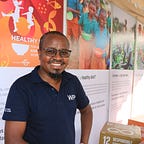Returning to a haunting emptiness
The long arduous road to recovery in Ethiopia
Nuria Musa Ahmed speaks softly. She doesn’t make eye contact with me the whole time. She doesn’t even look my way.
She is now the sole provider for a family of eight.
This was not the case eight months ago, when she did not need to worry about what her children would wear to school or didn’t pause to ask herself where she would get the next meal from or where she and her children would sleep.
She and her husband had worked hard together and built a good life. They made enough money selling milk from cows and camels and groundnuts.
But all their lives’ efforts crumbled in an unforgiving vortex of inter-communal violence.
Her goats, camels, and cows were taken.
Her house was demolished.
Her husband was killed.
Losing everything
Nuria fled with her youngest daughter and two other children. In the confusion she was separated from her other children for two agonizing days.
“I now live under a tarpaulin. It is just like sleeping outside. It is very cold and whenever it rains the floor floods,” says Nuria. “I used to live in a two-bedroom house with a tin roof.”
“My groundnuts farm is close to the Oromo-Somali regional border,” she says. “I cannot go there because it is still unsafe.”
Life-saving food rations
“I have nothing now,” says Nuria. “The only food I have is what I get from you [referring to the World Food Programme]”.
When I met Nuria, she had collected food from the World Food Programme (WFP) four days earlier. For a family of eight, she is entitled to almost two and half bags of cereals (120 kg), 12 kg of pulses and 3.6 litres of vegetable oil.
Nuria had already borrowed food after a break in supplies caused by a shortage of funds forced WFP to skip a month’s distribution in May. When she got her share mid-June, Nuria returned the one bag she had borrowed.
“I only have one bag left,” she says. “It will only last for a few more days. I don’t know what I will do when it runs out. I wish I could go back to my old life when we were able to afford food.”
Starting all over again
Nuria is one of the 7,160 people who have returned to Derera Arba kebele after eight months in Babille town, 20 kilometres from where they fled violence. While in Babille, Nuria lived in a house a family from a Somali community was forced to leave.
After peace negotiations between the Oromo and Somali communities, displaced families have started returning to what were their homes for decades, now lying in ruins.
Roofs were ripped off, household items looted or destroyed, livestock driven away and fields of crops were scorched to the ground.
Without a roof, the houses — commonly made of soil bricks — badly crumbled in the rains. Returning families pitcheed tarpaulin tents next to what was once their homes. Where walls haven’t collapsed, they use the tarpaulin for roofing.
The planting season is now past. And in any case, the ‘returnees’ do not have tools to prepare the land or the seeds to plant. It will take time before they can start growing their own food again.
Choosing who to take to school
Some, like Nuria, do not have a chance of recovering fast if they don’t receive immediate support. Her only farm is still inaccessible and her only source of income is the food from WFP.
“I have to sell part of the food, first to pay for transport from the distribution centre [60 Birr or US$2],” she says. “If I need sugar, tea leaves, or soap, again I have to sell some of the food — I don’t have any other choice.”
Nuria has opted to send two of the eldest children back to school. Two others are of school-going age but they have to stay at home.
“I cannot afford to take all the children to school,” she says. “Before the conflict, I never took note of the cost of schooling. I would easily spend up to 6,000 Birr (over US$200) on one child and not feel a pinch.”
Now she cannot raise the money to pay for books, pens and school uniforms for her children.
The long road to recovery
Abdi Ibro has been the Derera Arba kebele leader for three years now. He too was displaced, losing his 46 goats and a retail shop that he ran.
“Most people here were farmers and traders and a few kept livestock,” he says. “Homes were spread over a large area [nine sub-villages], but all are now destroyed.”
Returnees settled near a local school, all huddled together forming a village of tarpaulin-and-stick houses. They have lived here for the past three months.
Abdi Ibro doesn’t know how much longer it will take for his people to truly recover.
A new asphalt road is being constructed to connect Babille and the Somali Region. As the heavy machines and trucks roar past the Derera Arba makeshift village, Nuria confides, “I still don’t know how I will rise again.”
In East and West Hararghe zones, WFP reaches almost 400,000 internally displaced persons (IDPs) and returnees with food comprising cereals, pulses and vegetable oil, or a combination of food and cash, every month.
Across the country, WFP assists over 1 million IDPs and returnees in Somali, Oromia, Benishangul-Gumuz and Southern Nations Nationalities and Peoples’ Region. Fortified foods are given to over 111,000 children and pregnant and breastfeeding women through targeted supplementary feeding.
This is part of WFP’s response to Ethiopia’s Humanitarian Response Plan. This critical life-saving assistance faces severe funding shortfalls. WFP Ethiopia’s nutrition support currently faces a six-month shortfall (July to December) of US$49 million while the relief assistance faces a gap of US$79 million.
Click here to learn more about WFP’s work in Ethiopia.
